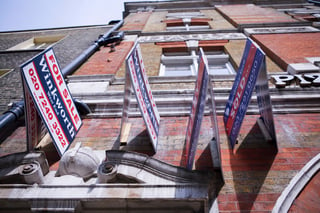 The main trigger to consider conducting a fixed asset disposal study is when you plan to renovate real estate property. When planning to demolish or renovate a building – whether tearing out lighting, HVAC units or other components – these assets are effectively abandoned or retired from the building. The tangible personal property’s remaining depreciable basis can be written off (for tax) once the asset is retired.
The main trigger to consider conducting a fixed asset disposal study is when you plan to renovate real estate property. When planning to demolish or renovate a building – whether tearing out lighting, HVAC units or other components – these assets are effectively abandoned or retired from the building. The tangible personal property’s remaining depreciable basis can be written off (for tax) once the asset is retired.
The concept is simple enough, but the challenge can be ascertaining the correct value for the component parts of the building. By performing a cost segregation on the original acquisition of the building, you obtain the value of the original components at the snapshot in time of the acquisition, thereby allowing you to the write off the remainder of the basis upon disposition of that old property.The Key Steps Of A Fixed Asset Disposal Study
- Perform a detailed cost segregation study on the original building acquisition to properly identify and attribute costs to the individualized units of property (UOP).
- Calculate the value of the retired assets and provide all of the necessary documentation needed to substantiate your claim of these tax deductions.
- Ensure your claim is substantiated by using an acceptable methodology to value component dispositions.
The Value In Conducting A Real Estate Fixed Asset Disposal Study
Generally, going back to address the correct value of original building components is a strategy that is completely overlooked. Often, building owners doubt the benefit is substantial and they lack the skill set necessary to capture it on their own. This type of analysis can be complex, but pairing this with a standard cost segregation study on the renovation costs will substantially increase the current year tax deductions.
If you’re planning on doing a renovation project for your building, incorporating a strategy to capture deductions helps in funding your projects or recovering some of the costs.
ROI is increased in the following ways from conducting a cost segregation and fixed asset disposal study:
- Fixed asset write-off of the remainder of the bases of disposed property;
- Cost segregation on renovation improvements, resulting in accelerated tax deductions; and
- Bonus depreciation is also in play for the current year, so 50% of the short-life property on the improvements may be expensed in the current year.
Relative to the renovation of real estate fixed assets, disposal studies should be a part of the normal consideration offered within a cost segregation study. If you have tax liability, disposal studies paired with cost segregation make a great real estate tax strategy to help you keep your cash or reinvest.
Ready to learn more about what tax incentive programs are available in your area? Find your state on the map.



